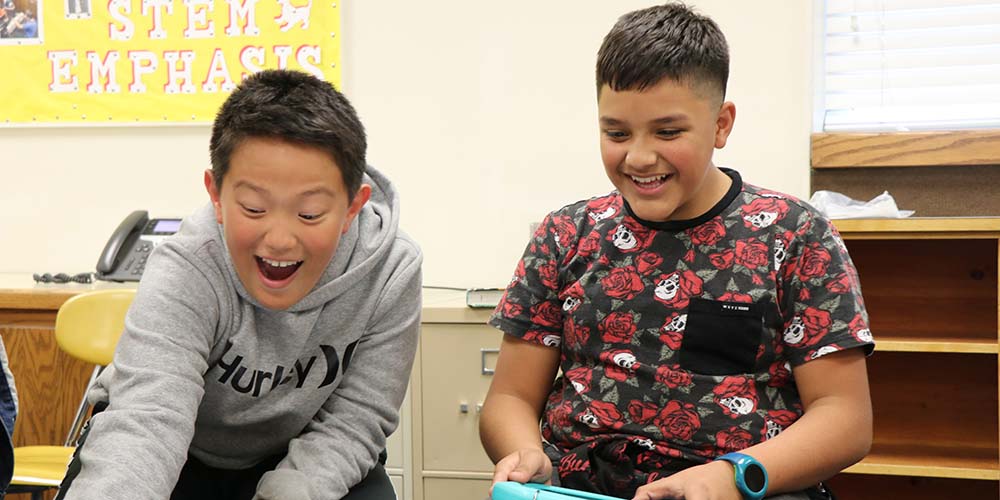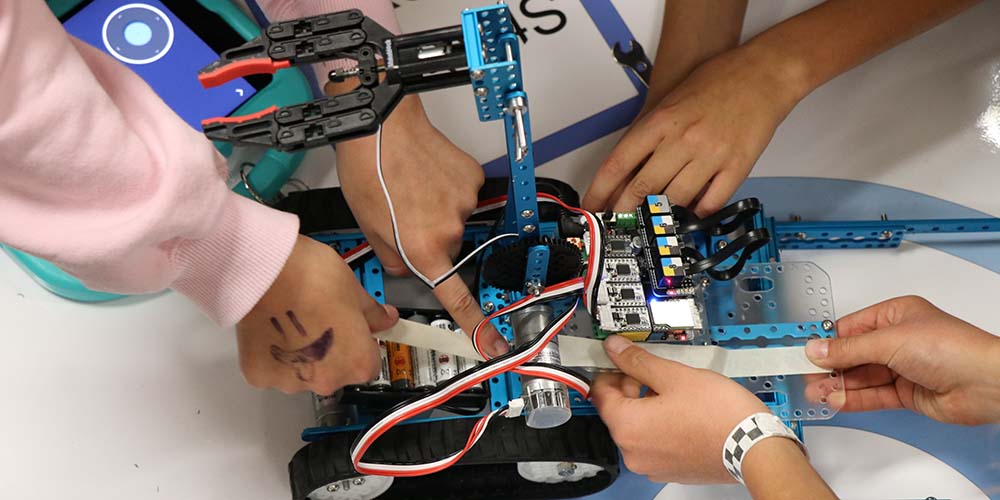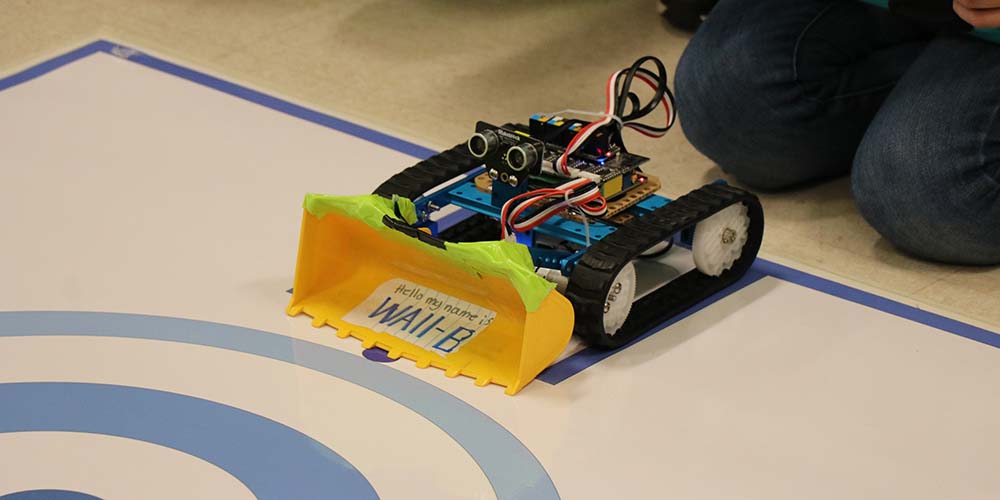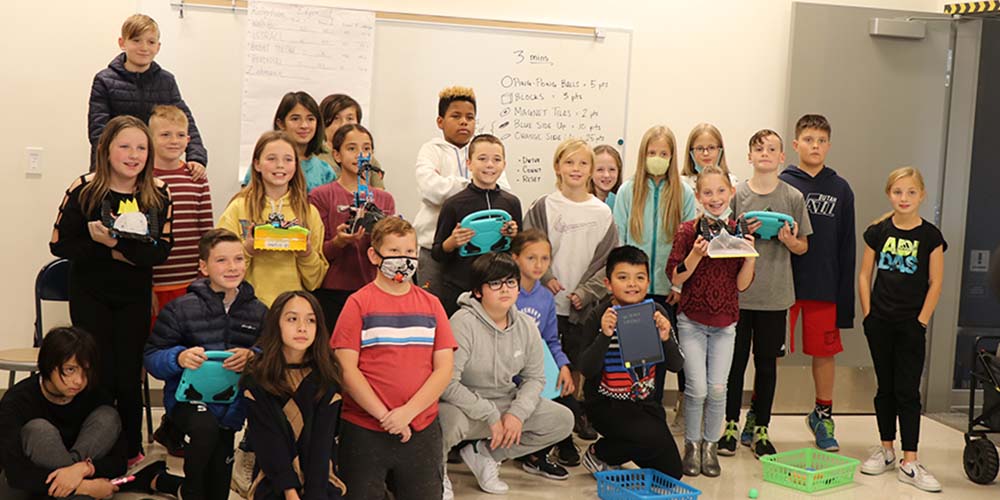April 16, 2024: Construction Update on Timpview High, Shoreline Middle, and Wasatch Elementary
April 18th, 2024
During the April 16 Board Meeting, the school board received an updated report of the ongoing...
The buzz of excitement permeated the air as groups of 5-6th graders huddled around four handmade robots. Each machine was parked on top of a large mat emblazoned with a circular target. Knick knacks of varying shapes and sizes were strewn about the surface.
Amy Rosenvall, the moderator, slowly counted down. “3…2…1…Begin!” Each team of children frantically, yet methodically pointed at areas of the mat and chattered as a classmate, selected from their group, piloted the robot via iPad.

The heated competition was the culmination of two months of work from the children, their teacher, and the District STEM’s Curriculum Specialist Rosenvall. Every few months, Rosenvall approaches a new set of teachers to see if they would like to participate in the robotics challenge (although sometimes the teachers hunt her down or request to go a second time). When they accept, they agree to devote time each day to allow their students to work on their machines. The time is typically fairly unobtrusive – 30 minutes or so a day, although that usually expands toward the end of the project due to popular demand.
They are told about the challenges their robot must be able to approach before they dive in. They are not told how they are supposed to tackle those challenges. They are not given step-by-step instructions on how to build their robot. And they are not given a clean program to install that will allow them to pilot it with ease.

One of the core tenets of engineering that Rosenvall believes is important to impress onto the young minds is problem solving. So when a group of students finds their robot arm isn’t functioning, they aren’t able to simply go to the teacher for help. Even if they were to try, the teacher will often know less than they do about the issue. Instead, they must comb through the code they have written for the machine and address the problem themselves. Last year when a student team experienced a hardware problem with the claw arm they were able to communicate with students from another school to solve the issue.
Rosenvall will often instruct and inspire through anecdotes she has acquired over the years. When students have struggles deciding what they will use to move objects into the center of their target, the aim of the competition, she will tell them a story from her time as a teacher.
As she prepared her students for a Science Olympiad Competition, the one event they could not participate in was the robotics course. At the time it was a sumo-wrestling style battlebot competition. However, the robotics kit was simply too expensive. She, and the class had accepted that it was out of their range. One student, however, wasn’t going to let a thing like expensive robotics kits stand in his way. The morning of the Science Olympiad competition, when everyone loaded onto the bus, he approached Rosenvall and informed her that he had the robot for the battlebots competition. On his own time, he had taken one of his cheap RC cars and used duct tape to attach a homemade metal dustpan to fashion a janky sort of bulldozer.
Kudos for creativity, let’s try it, she thought to herself and figured they could at least throw their hat into the ring. Last place was better than no place. In the first round, the opposing team had a beautiful 1K kit robot and it seemed laughable to pit their macGyvered toy against it (in fact the opposing team did laugh). Then, the RC car drove up to the thousand dollar machine, picked it up in it’s dustpan, and deposited it outside of the sumo ring. She could barely believe what she had seen. Of course, she was given the opportunity to see it again… and again… and again as their Little Robot That Could went on to take first place in the battlebots challenge. The story instills many important lessons. Many obstacles are better tackled by applying problem solving techniques rather than by pouring money into them. The enthusiasm of kids is often a stronger path to success than the cynicism of adults. And, of course, one of the biggest takeaways that many students have from it, dustpans are great.

It is difficult to undersell the importance of what Rosenvall has accomplished with this program. Her original task was to arm each teacher’s classroom with a robotics kit to facilitate STEM learning in the classroom. This felt like an admirable goal, but Rosenvall’s experience and instincts told her that there was a more effective way to achieve the aim of instilling a love of learning and STEM in the hearts of the students in the classroom. Rather than giving each teacher a robotics kit, she consolidated the kits she had and cooked up the two month course, culminating in the classroom challenge.
By giving the participating classrooms a goal to work to accomplish, the students are continuously enthusiastic. They have the steam they need to overcome the obstacles that might be in their way. And because each classroom has 4 or so robotics kits, the students are both able to get their hands on the minutiae of the machine, and work effectively on a small team.

Activities such as these are notorious for drawing in a decidedly male audience. One of Rosenvall’s goals was to reach the girls in each classroom and instill a sense of wonder in them from a young age. To this end, she found that girls are much more likely to participate in robotics when they see the narrative behind what they are doing. The classroom competition is partially designed to craft that narrative. And, judging from the groups of girls shouting and pointing at their robot as the time runs out, she has been wildly successful.
Right now the program is relatively small. There are about 4 sets of kits in all, which means that, in the entire district, four classes can participate at once. However, for the size of the program, and it’s budget, it is punching well above its weight class. One of the beautiful aspects of the program is its scalability. More funds means more robotics kits, which in turn will allow more children to have the level of exposure that is possible through it.

During the April 16 Board Meeting, the school board received an updated report of the ongoing...
Last term, Provo High School's Dance Company and AP Art students collaborated to create their...
March 28, 2024 Inst Asst 3/Extra Curricular—–Timpview High Social Worker—–Student...